The Balancing Act: A Guide to Ballast Boxes for Compact Tractors
Ever feel like your compact tractor is working a little too hard? Perhaps it's struggling with uneven terrain, heavy loads or both?
You're not alone!
Many compact tractor owners face this challenge. But fear not, there's a simple solution: the mighty ballast box!
At Earth & Turf Attachments, we seek to equip you with the knowledge and tools to transform your compact tractor into a powerhouse. That's why we've created this article to help you better understand what ballast boxes are, how to use them properly, and which one is right for your tractor.
Not enough time to read? Here's a summary:
- A ballast box is a weighted attachment that improves a compact tractor's stability and performance.
- It is crucial for counterbalancing the weight of heavy front attachments, which enhances safety and reduces the risk of tipping.
- Using a ballast box improves traction, increases lifting capacity, and can be a cost-effective alternative to purchasing a larger tractor.
- When choosing a ballast box, it's important to consider factors such as weight capacity, type, and durable materials, and to fill it with appropriate materials like sand or gravel.
Keep reading below to find out more!
What Is a Ballast Box?
A ballast box is a weighted three point hitch attachment designed to enhance the stability and performance of a compact tractor. The weight of the ballast box improves tractor stability and counterbalances the weight of heavy attachments or loads added to the front end loader. This added weight also improves traction, especially when plowing snow, on slippery or uneven terrain, and greatly reduces the chances of the tractor tipping, particularly when lifting heavy loads or making sharp turns.
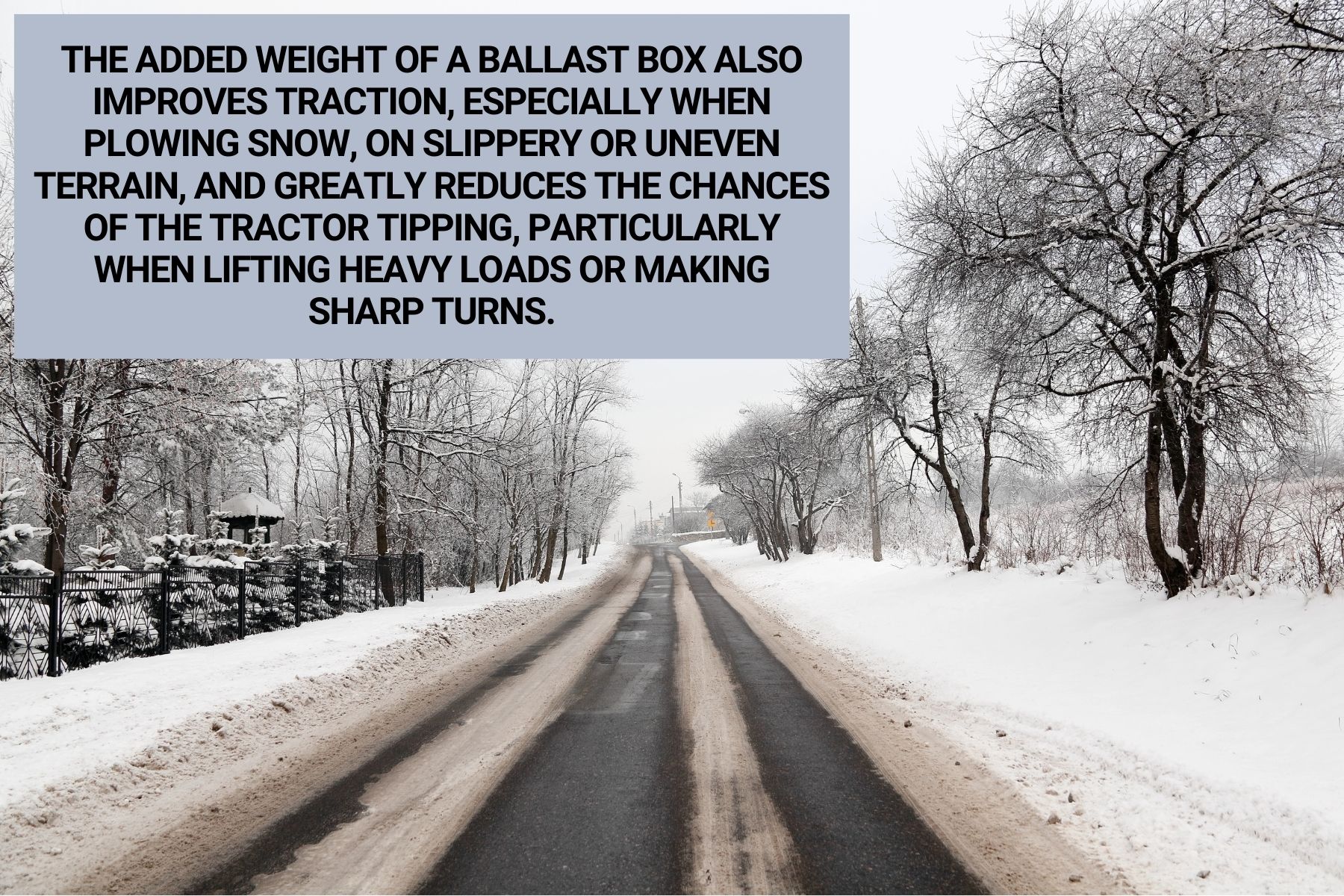
What Are Ballast Boxes Used For?
Without a ballast box, compact tractors face a variety of challenges that can hinder their performance and safety. One of the most common issues is reduced traction, particularly when plowing snow, working on slopes, or loose soil. This can lead to wheel slippage, making it difficult to maintain control and complete tasks efficiently.
Another significant problem is decreased stability. Without the added weight of a ballast box, compact tractors are more prone to tipping, especially during turns or when working on uneven terrain. This risk is further exacerbated when using heavy attachments, carrying heavy loads or operating on hillsides.
Finally, limited lifting capacity is another common issue. Compact tractors may struggle to handle heavy loads, such as large bales of hay or pallets of materials, without the added weight to counterbalance the load and maximize their operating load capacity.
Enter the ballast box, the hero that can solve these problems. By adding rear weight to the tractor, a ballast box significantly improves traction, allowing the tractor to dig deeper, push more snow and confidently navigate challenging terrain. It also enhances stability, minimizing the risk of tipping and promoting safer operation, especially on slopes. Furthermore, a ballast box can maximize lifting capacity, empowering the tractor to handle heavier attachments and materials with ease.
Why You Need a Ballast Box
Whether you're a homeowner with a large property, a landscaper, or a small-scale farmer, a ballast box significantly enhances the capabilities of your compact tractor. When you invest in a ballast box, you're not only improving your tractor's performance but also prioritizing safety and maximizing your investment.
One of the primary benefits of a ballast box is improved safety.
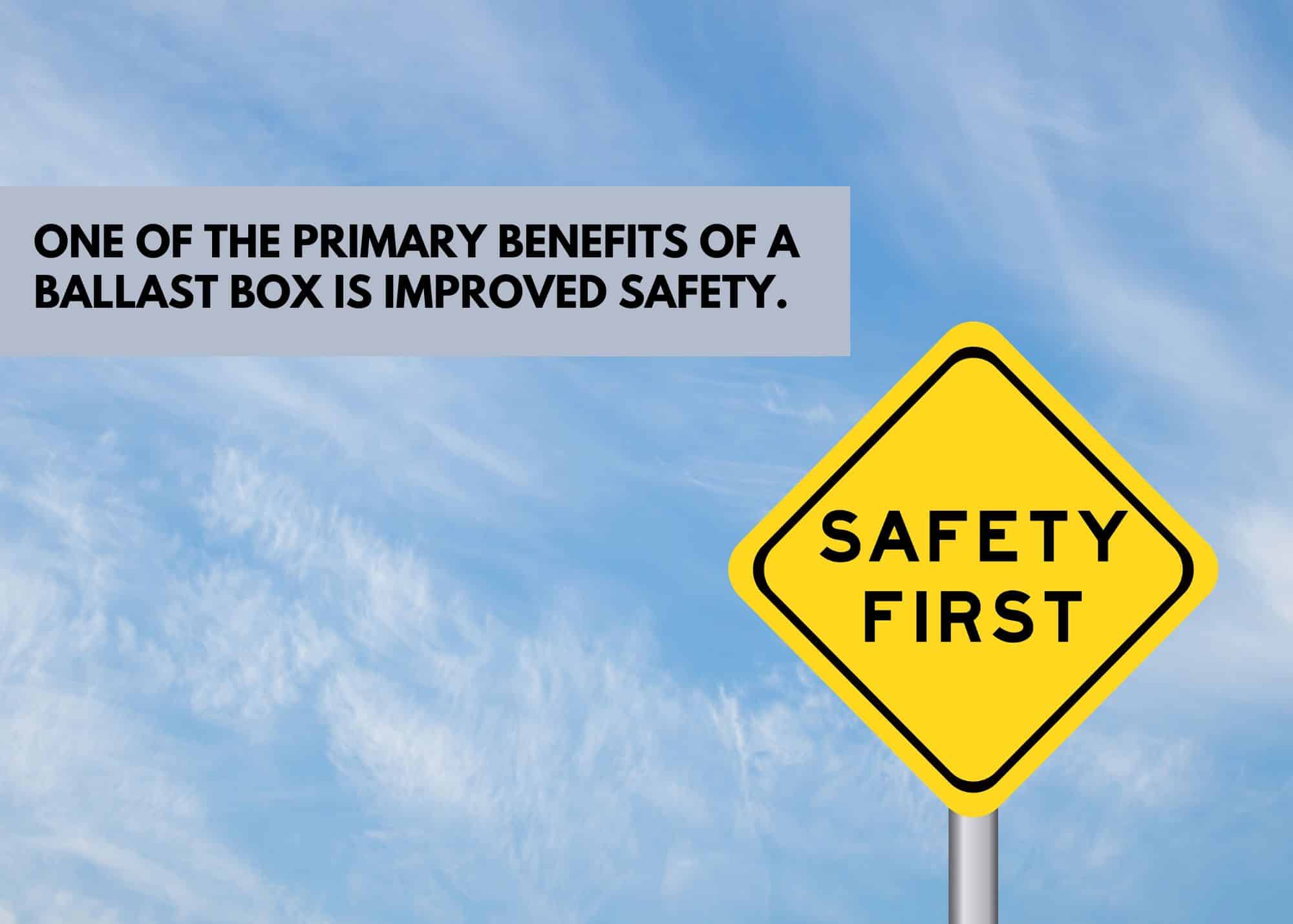
As we just discussed, because the ballast box adds weight to the rear of the tractor, it significantly reduces the risk of tipping, especially when working on slopes or uneven terrain. This added stability can help prevent accidents and injuries, creating a safer work environment for you and those around you.
In addition to safety, ballast boxes also enhance the versatility of your compact tractor. With increased traction and lifting capacity, you can tackle a wider range of tasks, from digging trenches and grading land to mowing large lawns, plowing snow and hauling heavy loads. This expanded capability allows you to get more done in less time, increasing your productivity and efficiency.
Perhaps most importantly, a ballast box is a cost-effective way to significantly enhance the capabilities of your compact tractor. Rather than investing in a larger, more expensive model, you can simply add a ballast box to your existing tractor.
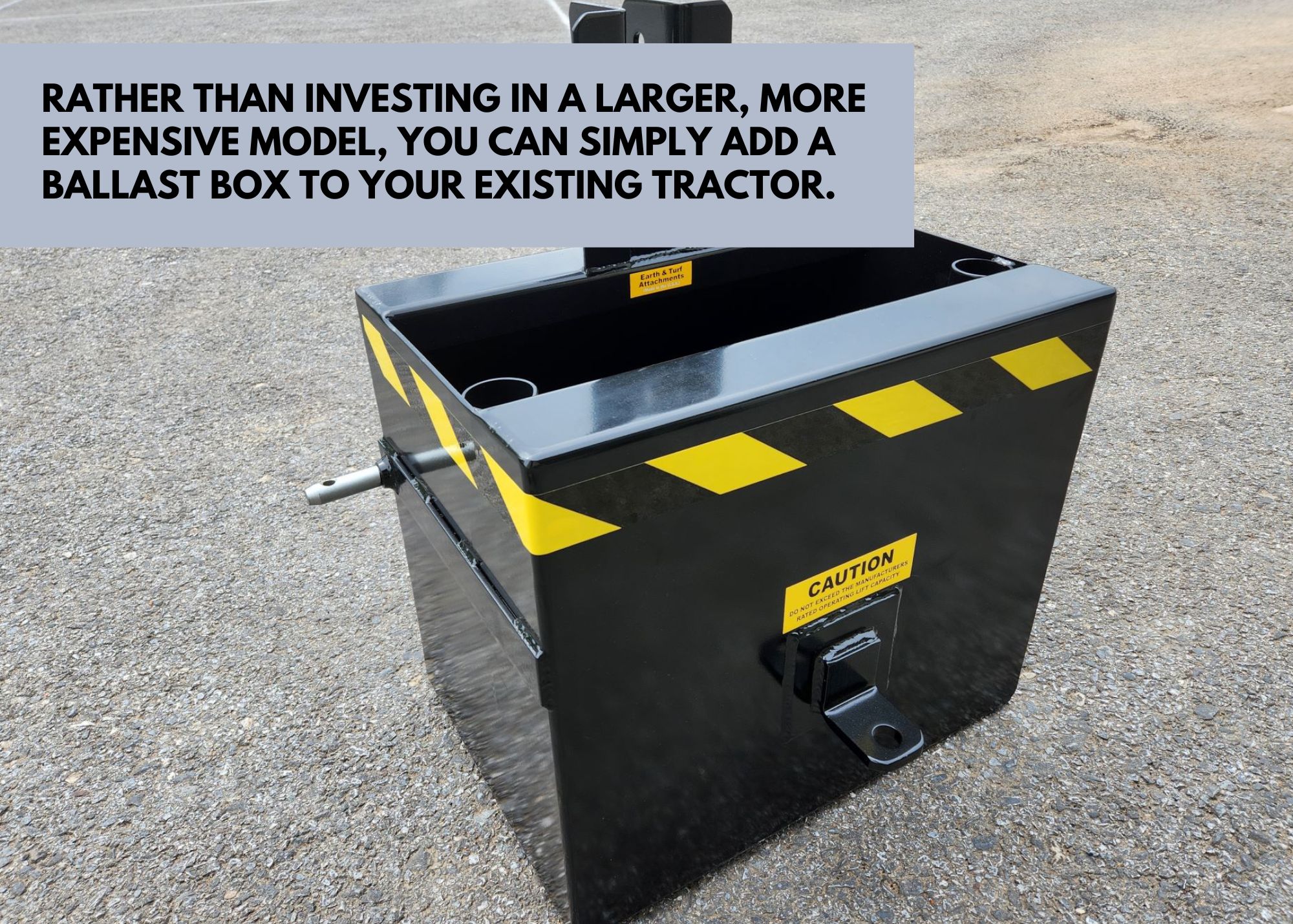
This simple upgrade can dramatically impact your tractor's performance, making it a wise investment for any compact tractor owner.
Properly Using a Ballast Box
Safety should always be the top priority when operating a compact tractor, and this is especially true when using a ballast box. Before adding weight to your ballast box, consult your tractor's owner's manual to determine the maximum weight capacity. Exceeding this limit can damage your tractor and compromise its stability.
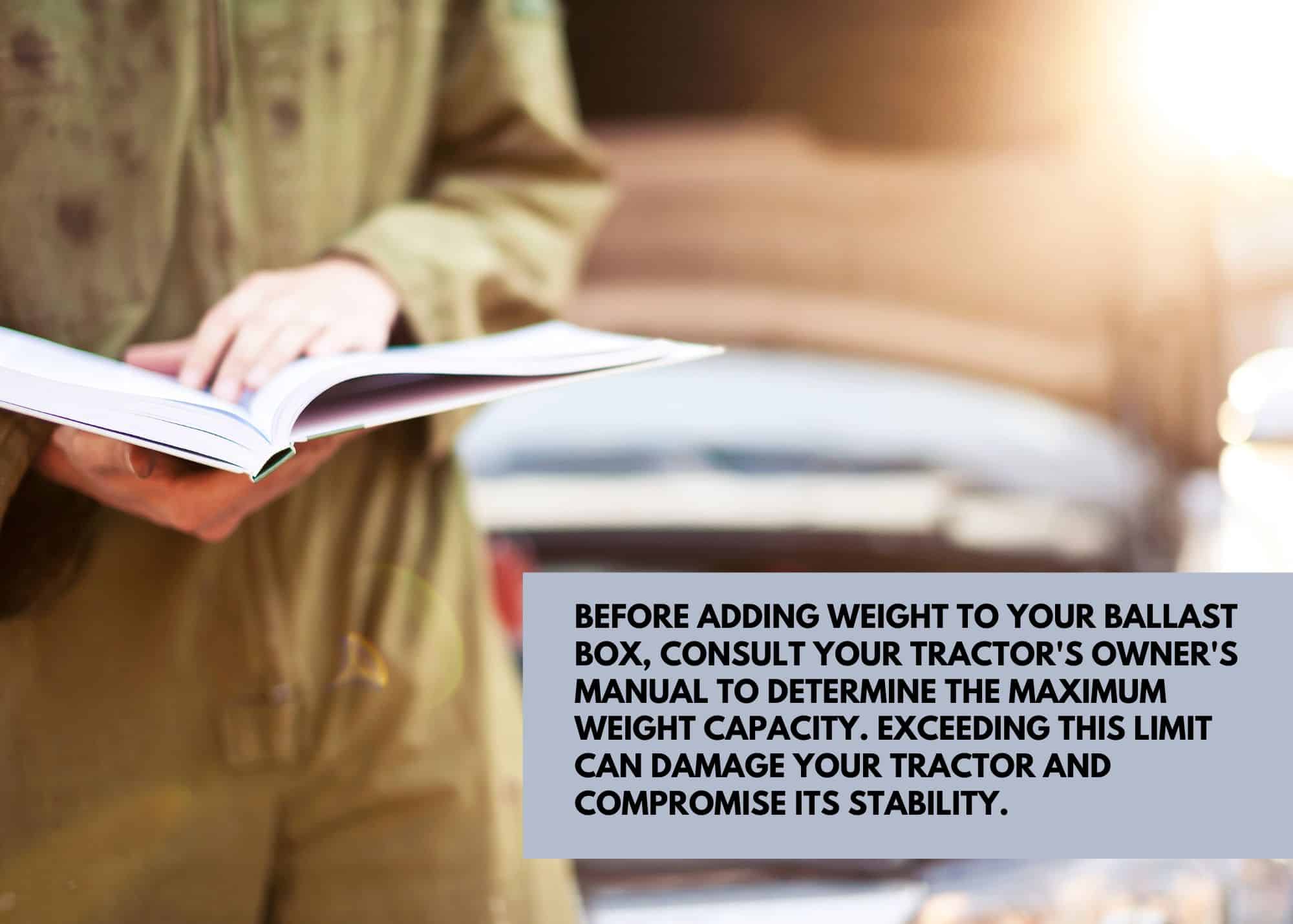
The type of material you use to fill your ballast box can also impact its performance. While soil may seem like a convenient option, it's not ideal due to its weight and moisture content. Over time, soil can become compacted , making it even more difficult to unload. Instead, consider using gravel, crushed stone, sand, or recycled materials, which are easier to handle and will drain better.
Choosing the Right Ballast Box for Your Needs
There are two main types of ballast boxes to choose from: 3-point hitch-mounted and hitch receiver-mounted.
3-Point Hitch Mounted Ballast Boxes
These are attached directly to your tractor's 3-point hitch, offering a secure and stable connection. They're versatile and can be easily removed when not needed. There are three point Quick Hitch systems that work quite well with ballast boxes making these attachments easier to attach to and detach.
Weight Capacity
The weight capacity of your ballast box should complement your tractor's capabilities and the types of tasks you typically perform.
To determine how much weight a ballast box will add, simply find out the cubic foot capacity of the box. For this example we will use a 5 cubic foot capacity ballast box.. Determine how much the infill material weighs. Pea gravel weighs 110 pounds per cubic ft x 5 cubic ft. equals 510 pounds. Using an empty box weight of 125 pounds the total ballast weight would be 510 + 125 = 635 pounds. It is important to match the size of the ballast box filled with the operating load capacity of the tractor loader.
Material and Durability
A high-quality ballast box is built to withstand the rigors of agricultural and landscaping work. Look for a box made from durable materials like steel, which can resist rust, corrosion, and other forms of damage.
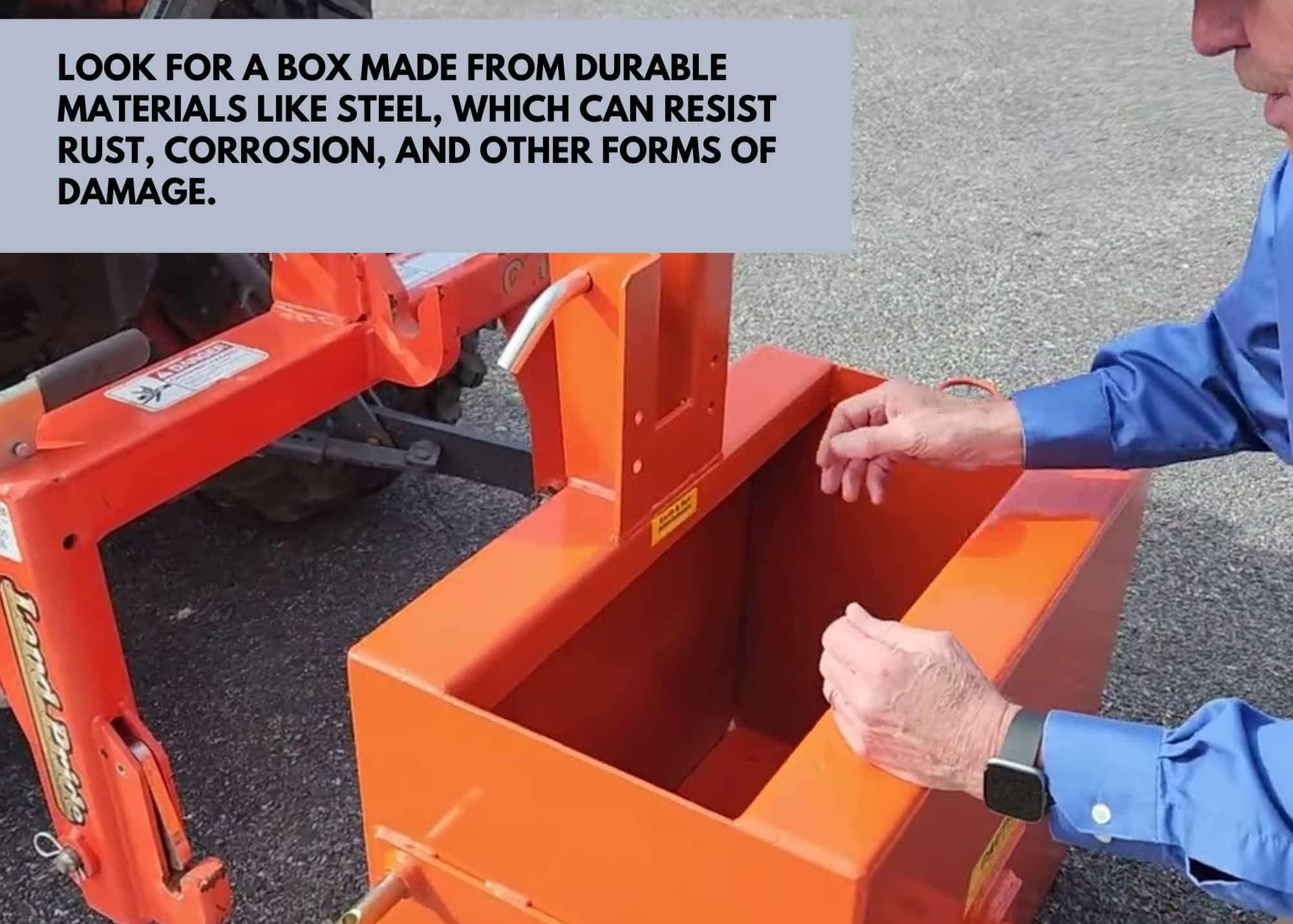
Additionally, consider the thickness of the steel and the overall construction of the box to ensure it can handle heavy loads and harsh conditions. Make sure the box has drain holes at the base to allow water to drain out of the box for longer service life.
By carefully considering these factors, you can select the right ballast box to enhance the performance and safety of your compact tractor.
Conclusion
By investing in a quality ballast box, you can transform your compact tractor into a versatile and powerful machine. Remember, a balanced tractor is a safe tractor. So, take the next step to enhance your productivity and safety.
Visit our website to explore our wide range of ballast boxes and other high-quality tractor attachments. Our knowledgeable staff is ready to help you find the perfect solution for your specific needs. Don't let your compact tractor hold you back—empower it with a ballast box and conquer any challenge!





